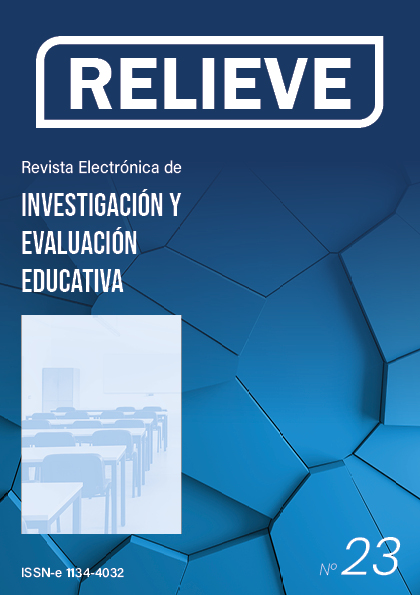Relocating within the university. Proposal of a relocation rate based on a study of educational trajectories
DOI:
https://doi.org/10.7203/relieve.23.1.9059Keywords:
University studies, students, achievement, dropout, educational pathwaysAbstract
The university has undergone important changes in recent years as the expansion of greater heterogeneity in the student profile. This reality has led to significant changes in the university access, the achievement and the exit to the labour market. Students from different socioeconomic backgrounds, different access pathways and incorporated into the university with different expectations and rhythms are producing a diversification of educational paths. In this sense, a higher frequency of educational pathways that trigger changes and school leavers occurs, which has meant that numerous studies have been developed to determine the explanatory factors. This article approaches the changes of degrees and dropouts of university studies using the concept of “academic relocation” through an analysis of educational pathways of 60,300 subjects. The period examined have been six academic years (2009-10 to 2014-15). The main aim is to study the “relocations” between undergraduate degrees for, from this, proposes a new indicator: the “rate of relocations”. The perceived differences between degrees and their grouping by branches of knowledge allow noting the important institutional heterogeneityDownloads
Downloads
Published
How to Cite
Issue
Section
License
The authors grant non-exclusive rights of exploitation of works published to RELIEVE and consent to be distributed under the Creative Commons Attribution-Noncommercial Use 4.0 International License (CC-BY-NC 4.0), which allows third parties to use the published material whenever the authorship of the work and the source of publication is mentioned, and it is used for non-commercial purposes.
The authors can reach other additional and independent contractual agreements, for the non-exclusive distribution of the version of the work published in this journal (for example, by including it in an institutional repository or publishing it in a book), as long as it is clearly stated that the Original source of publication is this magazine.
Authors are encouraged to disseminate their work after it has been published, through the internet (for example, in institutional archives online or on its website) which can generate interesting exchanges and increase work appointments.
The fact of sending your paper to RELIEVE implies that you accept these conditions.














